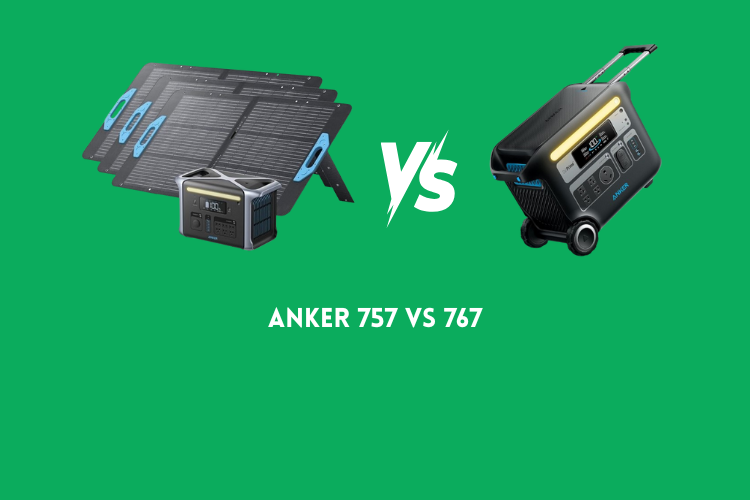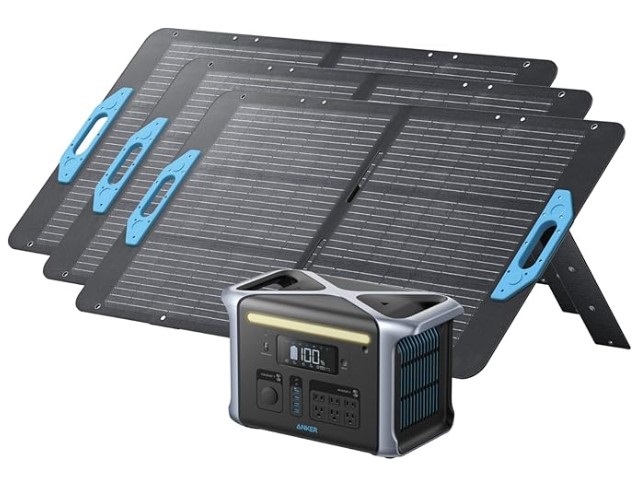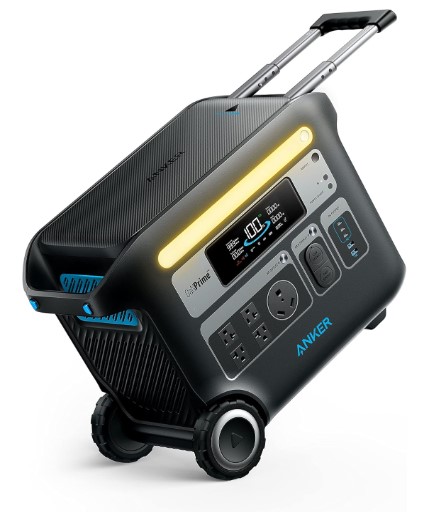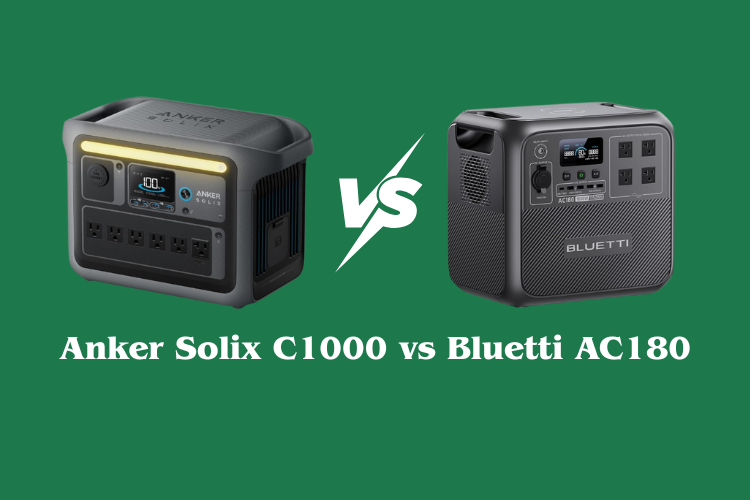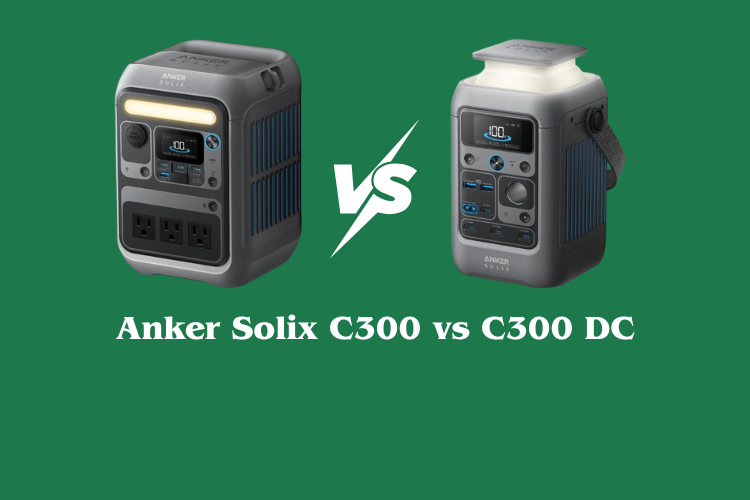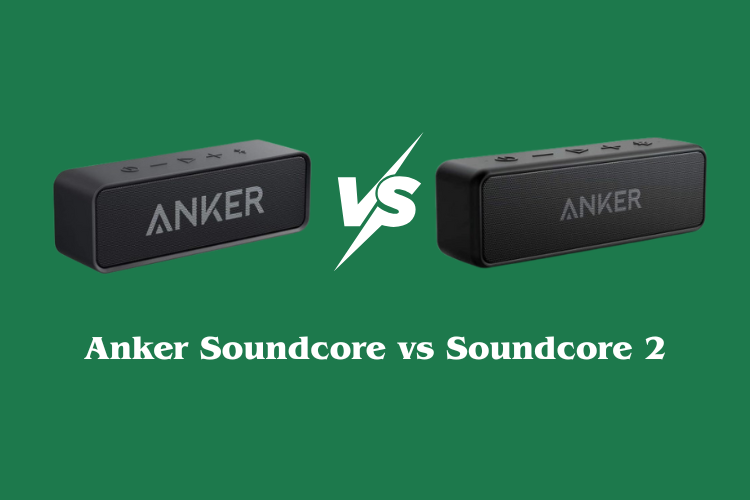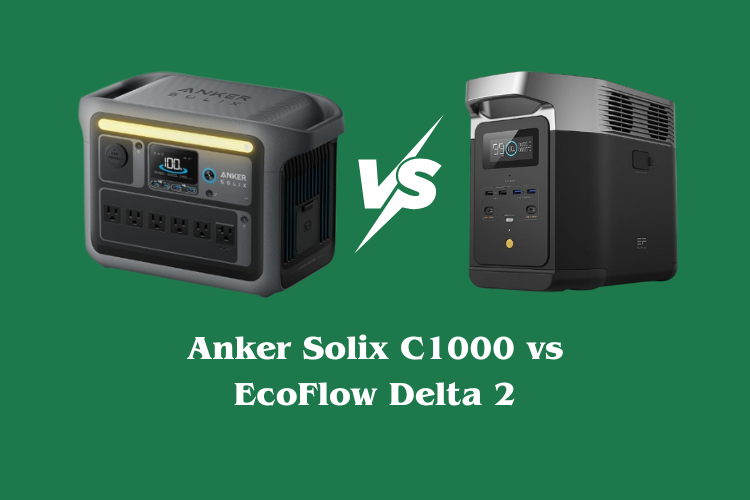Anker 757 vs 767 – Which Power Station Packs Have More Power?
Portable power stations have become essential for camping, road trips, and backup power at home. Anker, a trusted brand in portable energy, offers two powerhouse models the Anker 757 and the Anker 767.
Both deliver strong performance, long battery life, and fast charging features, but they target slightly different users. The 757 is ideal for those who need a compact yet capable energy source, while the 767 caters to heavy power users with higher capacity and advanced features.
Understanding the differences between these two can help buyers decide which one fits their needs best. This detailed comparison explores design, capacity, ports, battery technology, portability, and value for money.
By the end, readers will know which model gives the best balance of performance and reliability for off-grid adventures or emergency use at home.
Anker 757 vs Anker 767
Portable power stations are becoming a daily essential for people who love camping, live in areas with unstable power, or want backup energy for emergencies.
Two of Anker’s best models the Anker 757 PowerHouse and Anker 767 PowerHouse (SOLIX F2000) stand out for quality, durability, and strong battery performance.
Both offer long battery life, advanced charging technology, and safe operation. Yet, they differ in power capacity, portability, and use cases. This detailed comparison helps you understand every important detail before choosing between the two.
Anker PowerHouse 757
Product Details
The Anker 757 PowerHouse is a mid-size portable power station with a capacity of 1229Wh and a 1500W output. It’s built to handle small to medium devices like laptops, coffee makers, fans, or small fridges.
It runs on LiFePO4 battery cells, known for their long life and stable power delivery. The body is made of impact-resistant materials, designed to handle outdoor conditions. The total weight is about 28.88 pounds, so it’s lighter than most large-capacity stations.
It supports solar charging and even includes three 100W Anker 625 solar panels, a dustproof bag, and all necessary cables. The color is coffee-brown, giving it a unique look. The product also includes a 5-year warranty, double the standard coverage of many brands.
Features
The 757 includes many smart technologies to improve performance and reliability.
1. InfiniPower Technology
This feature combines LiFePO4 battery chemistry, smart temperature control, and high-quality electronic components. It allows the unit to last over 10 years, even with daily use.
2. Smart Temperature Control
It tracks the internal temperature 100 times every second to avoid overheating or battery stress. This keeps the system stable and safe even under full load.
3. High Solar Charging Efficiency
The included solar panels offer up to 23% sunlight conversion, so they work even on cloudy days. The Suncast Technology helps users align the panels perfectly for maximum charging speed.
4. Fast USB-C Power Delivery
The power station includes a 100W USB-C port that can charge laptops directly without adapters. This makes it more convenient for travel or outdoor work.
5. Wide Range of Ports
The 757 includes 13 output ports in total:
-
6 AC ports
-
4 USB-A ports
-
2 USB-C ports
-
1 car outlet
That’s enough to power multiple devices at once, from smartphones to kitchen appliances.
What Is the Good?
The Anker 757 shines in durability, safety, and all-around balance. Its LiFePO4 battery is a major strength — it can last 6 times longer than traditional lithium-ion batteries.
The solar charging system is efficient and easy to set up. The unit’s compact shape and built-in handles make it ideal for outdoor trips or camping. Despite its mid-size capacity, it can power most home electronics during a short power outage.
The noise level stays low during operation, and the display shows clear charging information. Its energy efficiency ensures minimal loss while powering or charging devices.
What Is the Bad?
The main drawback of the 757 is its limited capacity for high-power tools or large household appliances. Heavy devices like air conditioners or microwaves drain the battery fast.
It also takes longer to charge through a wall outlet compared to newer fast-charging models like the 767. The display brightness is not great under direct sunlight. The total weight, while not huge, can still feel heavy for solo travelers.
Overall Opinion
The Anker 757 PowerHouse fits people who want solid performance and long life without the bulk of larger models. It’s a great choice for camping, van life, and emergency backup for small appliances.
Its balance between size, capacity, and reliability makes it a good all-rounder. It’s not the most powerful, but it’s dependable and built to last.
Anker 767 PowerHouse
Product Details
The Anker 767 PowerHouse (SOLIX F2000) is a higher-end model with much more capacity and power output. It provides 2048Wh of energy and a 2400W continuous output, with surge power up to 3600W using Anker’s SurgePad Technology.
It’s built to handle heavy devices such as refrigerators, microwaves, electric grills, or power tools. With a weight of 67.3 pounds, it’s heavier but also twice as capable. The build quality is rugged, with strong handles and smooth wheels for easier transport.
The package includes all key accessories: AC cable, car charging cable, solar charging cable, and a 5-year full warranty.
Features
The 767 brings in Anker’s most advanced power system and faster charging speeds.
1. InfiniPower Battery System
Like the 757, it uses LiFePO4 cells rated for 3,000+ cycles, giving the battery a lifespan of over 10 years.
2. HyperFlash Charging Technology
This new tech allows the power station to charge from 0 to 80% in only 1.4 hours. It saves time during emergencies and outdoor setups.
3. SurgePad Power Management
This feature allows the station to handle temporary surges up to 3600W, useful for starting motors or heavy tools.
4. GaNPrime Technology
Anker’s GaNPrime components reduce heat and improve energy conversion efficiency, which means cooler, safer, and longer operation.
5. Wide Device Compatibility
The 767 has 12 ports, including:
-
4 AC outlets
-
3 USB-C ports
-
2 USB-A ports
-
2 car outlets
-
1 dedicated RV port
6. Expandable Battery Design
It can connect with extra battery modules, increasing total capacity from 2048Wh to 4096Wh. This makes it suitable for home backup or long RV trips.
What Is the Good?
The Anker 767 stands out for its raw power and fast charging. The HyperFlash technology cuts recharge time by half compared to older models. The 2400W continuous output can run almost any household appliance, and the RV port adds flexibility for travel setups.
The expandable battery system is a major advantage for users who need longer backup time. The build quality is solid, and the handle-and-wheel design helps move it around despite its weight.
It’s a full replacement for small generators but without noise, fumes, or fuel. The cooling system runs quietly, and the LED display clearly shows all charging details.
What Is the Bad?
The biggest weakness of the Anker 767 is its weight. At over 67 pounds, carrying it alone can be difficult. It’s also more expensive, which may not fit every budget.
Solar panels are sold separately, which increases the total cost for users planning to use solar charging. The size can also make it harder to store in smaller RVs or tents.
Overall Opinion
The Anker 767 PowerHouse is for users who need high performance, fast recharge, and expandable capacity. It suits RV owners, off-grid setups, and home users who want serious backup power.
Though heavy and costly, it delivers unmatched speed and reliability. For long-term investment and demanding power needs, the 767 stands out as one of the best in its class.
Detailed Comparison: Anker 757 vs Anker 767
Both the Anker 757 and 767 share strong engineering and durable battery design. They use LiFePO4 chemistry, which gives them over 3,000 charge cycles enough to last a decade. Both include InfiniPower technology, temperature control, and a 5-year warranty.
Yet, the performance difference is clear. The Anker 757 has a 1229Wh battery, perfect for light to medium power use. It’s compact, easier to carry, and comes with solar panels included. It suits campers, small RVs, and families who need basic power support.
The Anker 767, on the other hand, jumps to 2048Wh capacity and 2400W output (3600W surge). It’s a powerhouse for large homes or long outdoor adventures. The HyperFlash system charges nearly twice as fast, and the expandable battery option makes it more future-proof.
The 757 focuses on portability and price. The 767 focuses on power and performance.
| Feature | Anker 757 PowerHouse | Anker 767 PowerHouse (SOLIX F2000) |
|---|---|---|
| Battery Capacity | 1229Wh | 2048Wh |
| Output Power | 1500W | 2400W (3600W surge) |
| Weight | 28.88 lbs | 67.3 lbs |
| Charging Speed | 3.6 hrs (solar 80%) | 1.4 hrs (AC 80%) |
| Ports | 13 | 12 (with RV port) |
| Expandable Battery | No | Yes (up to 4096Wh) |
| Warranty | 5 years | 5 years |
| Best Use | Camping, light home backup | RVs, large appliances, heavy power users |
If your main goal is lightweight portability, go for the Anker 757.
If your goal is maximum power and speed, choose the Anker 767.
FAQs
1. Can both power stations handle refrigerators?
Yes. The 767 can run a full-size fridge for hours, while the 757 can handle smaller mini-fridges or short-term use.
2. Which model charges faster?
The Anker 767 charges much faster with HyperFlash reaching 80% in about 1.4 hours.
3. Are both safe for airplane travel?
No. Both exceed the battery limit allowed on planes, so they are not allowed in air travel.
4. Do they support pass-through charging?
Yes. Both can charge devices while being charged themselves.
5. Which one is better for RV camping?
The Anker 767 is better suited due to its RV port, higher capacity, and faster recharge.
Conclusion
Both the Anker 757 and Anker 767 are excellent examples of Anker’s engineering quality. The 757 is smaller, lighter, and better for portable setups. The 767 is larger, more powerful, and built for long-term heavy use.
For everyday use and travel — Anker 757 PowerHouse gives the right balance. For home backup and full-scale energy needs — Anker 767 PowerHouse delivers unmatched performance.
Both are long-lasting, safe, and future-ready the final choice depends on how much power you truly need.

